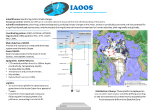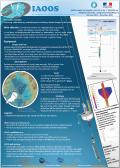
NAOS: Observations de l’océan global pour l’étude et la prévision de l’océan et du climatavec la préparation de la nouvelle décennie Argo. L’enjeu de NAOS est de mettre en place une véritable surveillance de l’ensemble des océans et de renforcer l’excellence française dans l’observation et la prévision de l’océan et du climat. L’objectif du projet est de consolider la participation française et européenne au réseau international Argo de flotteurs profilants et d’anticiper les évolutions du réseau pour la prochaine décennie.

ACCESS is an European Project supported within the Ocean of Tomorrow call of the European Commission Seventh Framework Programme. Its main objective is to assess climatic change impacts on marine transportation (including tourism), fisheries, marine mammals and the extraction of oil and gas in the Arctic Ocean. ACCESS is also focusing on Arctic governance and strategic policy options.

DAMOCLES (Developing Arctic Modeling and Observing Capabilities for Long-term Environmental Studies) was an integrated ice-atmosphere-ocean monitoring and forecasting system designed for observing, understanding and quantifying climate changes in the Arctic. DAMOCLES was specifically concerned with the potential for a significantly reduced sea ice cover, and the impacts this might have on the environment and on human activities, both regionally and globally.

The main objective of ACOBAR is to develop a system for environmental monitoring of the interior of the Arctic Ocean by assimilation of data obtained with acoustical methods including tomography, data transmission from underwater platforms, communication and navigation of floats and gliders under the ice-cover.

The project Arctic Tipping Points (ATP) will identify the elements of the Arctic marine ecosystem likely to show abrupt changes in response to climate change, and will establish the levels of the corresponding climate drivers inducing regime shift in those tipping elements.
A voir
Chiffres-clés
Coordinateur: UPMC (LOCEAN-LATMOS)
Partenaires: INSU-CNRS, IPEV, ICARE
Industriels: NKE, CIMEL, SAMS, MOBILIS
Budget: 5.1 M€
Durée du projet: 9 ans
15 plates-formes autonomes opérationnelles
6 plates-formes renouvellées par an
40 plates-formes IAOOS au total




